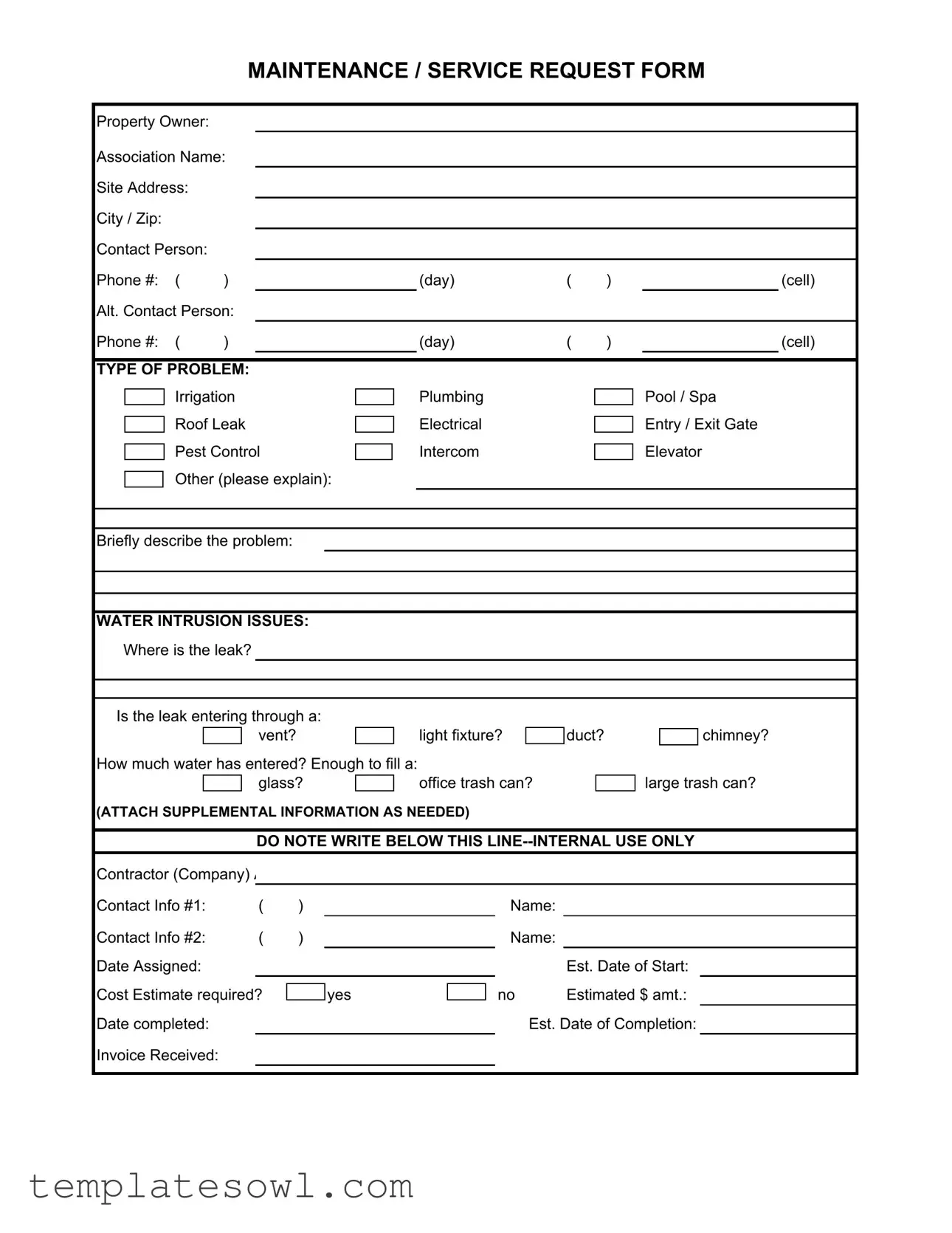What information do I need to provide when submitting a Maintenance Request?
When filling out the Maintenance Request form, you will need to provide several pieces of information. Start with your property owner or association name, site address, and city/zip code. Include the names and phone numbers of the primary contact person and an alternate contact person. Make sure to specify the type of problem you are experiencing, such as plumbing, electrical, or water intrusion. Providing a brief description of the issue is also essential, as it helps in assessing the problem quickly.
How do I describe a water intrusion issue on the form?
For water intrusion issues, it's critical to be as specific as possible. Indicate the location of the leak within your property. Choose from options such as vents, light fixtures, ducts, or chimneys to specify how the water is entering. Additionally, describe the volume of water that has entered by comparing it to common items like a glass, office trash can, or large trash can. This information helps in understanding the severity of the situation.
What happens after I submit a Maintenance Request?
After submitting your request, the maintenance team will review the information provided. They will then assess the urgency and necessity of the repairs. A contractor will be assigned to your request, and you'll receive further communication regarding the estimated date of work start, cost estimates, and other relevant details. Keep in mind that your request is processed internally, and you may not be able to see all details immediately.
Is a cost estimate required for all maintenance requests?
No, a cost estimate is not required for every maintenance request. However, for some types of issues—especially those that may involve substantial repairs or services—an estimate might be necessary. When completing the form, you will have the option to indicate whether a cost estimate is required. If unsure, it's best to request one to avoid unexpected expenses.
What should I do if I have supplemental information to include?
If you have any additional details or documentation that might assist in addressing your maintenance request, be sure to attach that information when you submit the form. This could include photos, previous maintenance records, or detailed descriptions. Providing supplemental information can help speed up the assessment and resolution process, ensuring that the maintenance team has all the facts they need to address your concerns effectively.
